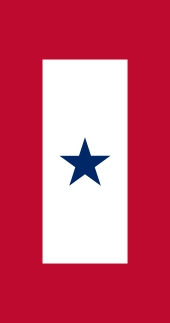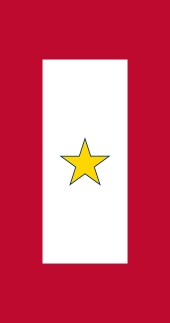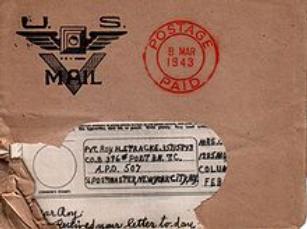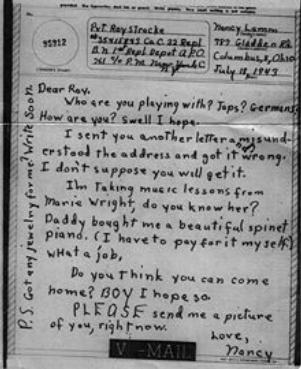It is almost impossible to
describe how much WWII affected everyone’s life. Very
few families in Pacolet and other South Carolina towns
were not touched by it. Many, many men and, lots of
women, went into military service. A number of men from Pacolet were
in combat and several were killed in action.
During the War, many families flew a small white flag
with a red border outside their door. The flag had a
blue star for each man in service from that family. If
the man were killed, then the flag flew a gold star. For
this reason, women who had lost a son in service were
called “Gold Star Mothers.”
For the duration of the War, almost everything was
rationed and hard to get. This included most food,
gasoline, tires, shoes and many other things. Ration
books were distributed by the Government and to buy
something you not only needed the money but a ration
coupon or stamp for that item to allow you to buy
it.
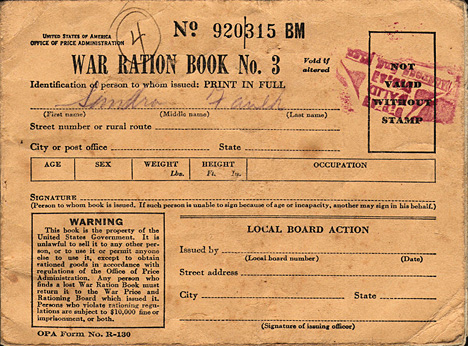
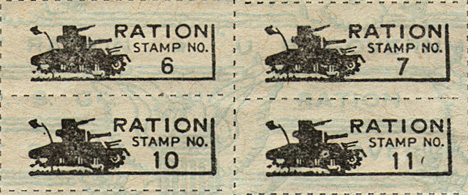 Examples of a
ration book and ration stamps.
Examples of a
ration book and ration stamps.
Communication, during the War, was quite different than
it is today. There were very few telephones. The most
common way to correspond was through letters. Letters to
and from soldiers overseas were via “V-Mail”. Letters
were reduced in size through being photographed. The
resulting film could be shipped overseas much easier
that the original letters. The film was printed out as a
reduced size letter to deliver to the service man.
Examples of a
V-Mail Letter
Another common way to communicate was the use of the
telegram via Western Union. Telegrams were delivered by
a Western Union Messenger in a specially marked car.
The sight of a Western Union messenger became a dreaded
sight as the War went on. The US War Department used
telegrams to notify families that a family member had
been wounded, was missing in action, or killed in
combat. Every family with someone in the service in
combat feared getting one of these telegrams that
usually started “Regret to inform you ”.
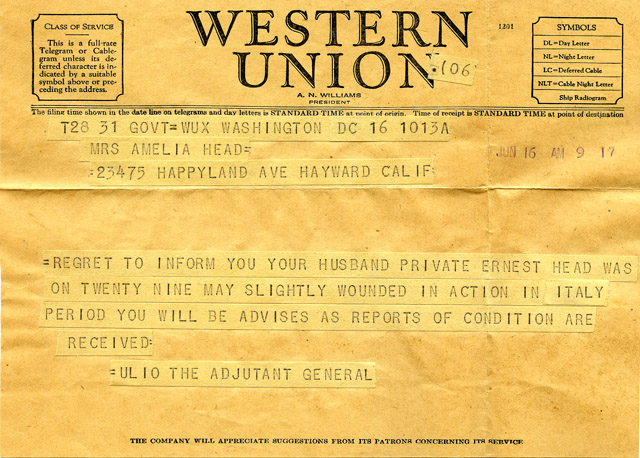 Copy of a
telegram notifying family that soldier had been
wounded in action.
Copy of a
telegram notifying family that soldier had been
wounded in action.
The US was only in the War for four years from 1941 to
1945 but for most people from that time, it seemed much
longer. Even families that did not have someone in
service had their lives disrupted by the War. My Dad
went to work in the Charleston Navy Yard only a month
after Pearl Harbor and my family moved to North
Charleston. We lived there until the end of the War. My
wife’s Dad, Bill McKinney, was a carpenter and went to
Oak Ridge, Tennessee to work on a secret project. It
turned out to be the facility that made one of the
atomic bombs that was dropped on Japan to help end the
War.
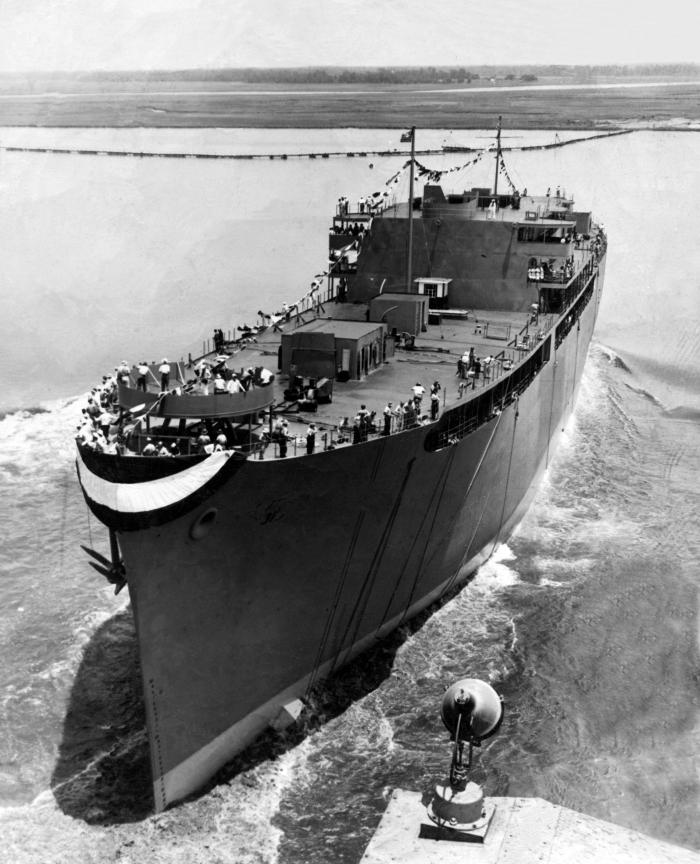
The USS Tidewater (AD-31)
being launched at the Charleston Naval Shipyard on
June 30, 1945. Shipyard workers were still working
on the ship as it was being launched. My Dad, Fred
(Doog) Teaster, was a ship fitter and is one of the
people in the gun ring in the front of the ship. As
an eight year old, I saw this ship during a Shipyard
Open House, the day before it was launched.
There were signs of the War close to Pacolet. Camp Croft, the huge
training base, was only a few miles away. It brought new
jobs and new people to the area. The sound of the
artillery at the camp could be heard in Pacolet day and
night.
Nowadays, with a small volunteer army, many people do
not know anyone in service. However, in WWII, we had the
draft and about 13 million men served in the military
and it was a certainty that you knew someone in the
service. It was almost a near certainty, that you also
had a relative in uniform.
Volume II of a History of Pacolet tells
the story of men from Pacolet that were taken as
Prisoners of War. Read their stories at POW.
As far as we know, there are no first hand accounts left
by any of the Pacolet POW's. However, there is a
detailed story left by a similar South Carolina soldier
who was a POW. That remarkable man was Lolace V.
Cordray from Ravenel, South Carolina. Lolace was the
father of my son-in-law, Michael Cordray. In his youth,
Lolace, had an experience that most of us can barely
imagine. In 1988, my daughter, Laura Teaster Vaughan,
interviewed Lolace about his POW experience for a
college history project at Charleston Southern
University. You can read his story at Lolace V. Corday - A Prisoner of
War in Germany. (We are
sorry to report that Lolace passed away in July of
2012. His wife of 60+ years, Etheline Grooms Cordray,
had died less than three months before.)
An Unusual
Connection
Strange things happen during wartime. There is a
little known connection between Pacolet and the
Propaganda effort of the Nazi Government during WWII.
Click on this link to
learn more.

